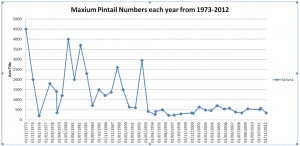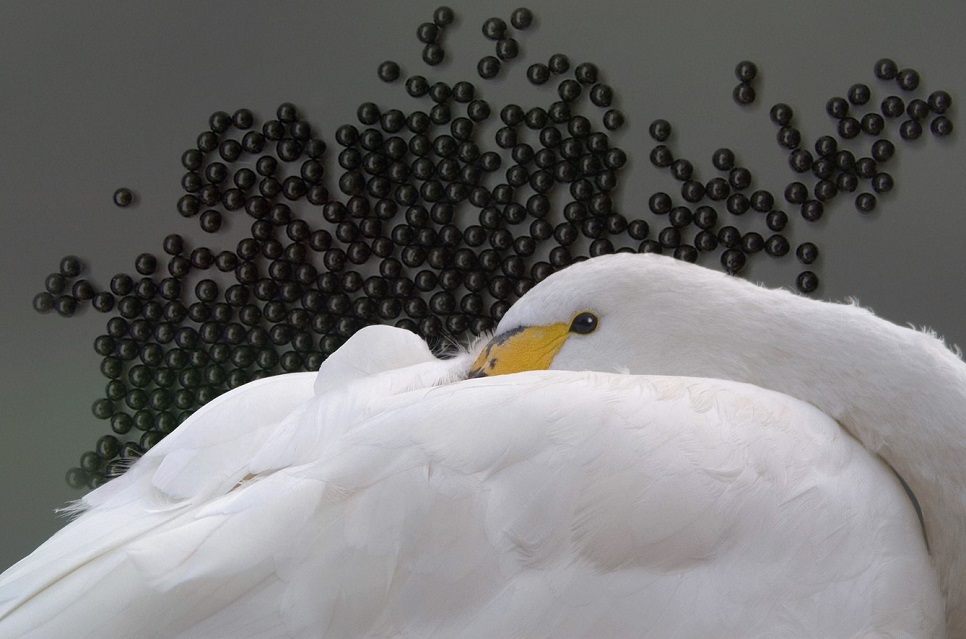Pintail numbers over 40 years
Every winter thousands of Whooper swans and Pink-footed geese descend on WWT Martin Mere to use the reserve as a safe haven, but there are also thousands of ducks that come and spend the winter at the wetland centre.
Each year thousands of shelduck, pintail, wigeon, teal and starlings also share the mere.
The Pintail is an exceptionally beautiful bird and probably the most ‘goose-like’ duck, but it has seen a decline in their numbers over the past 25 years by as much as 33% nationally, declining by more than 50% in the UK since the mid 2000s. WWT Martin Mere can expect to welcome 500 pintails this winter, many are already there, but this is in contrast to peak numbers of 4500 back in the early 70s. This decline is of particular concern as up to half of all the Pintail in northwest Europe rely on the UK’s estuaries and wetlands during winter. Below is a graph of Pintail numbers at Martin Mere since 1973:
This elegant dabbling duck, breeds predominantly in northeast Europe in the summer and winters in southern and western Europe. There is evidence that some of the population may be wintering further east, as numbers in the Netherlands have increased slightly over the last 25 years. Monitoring of this species will continue.


